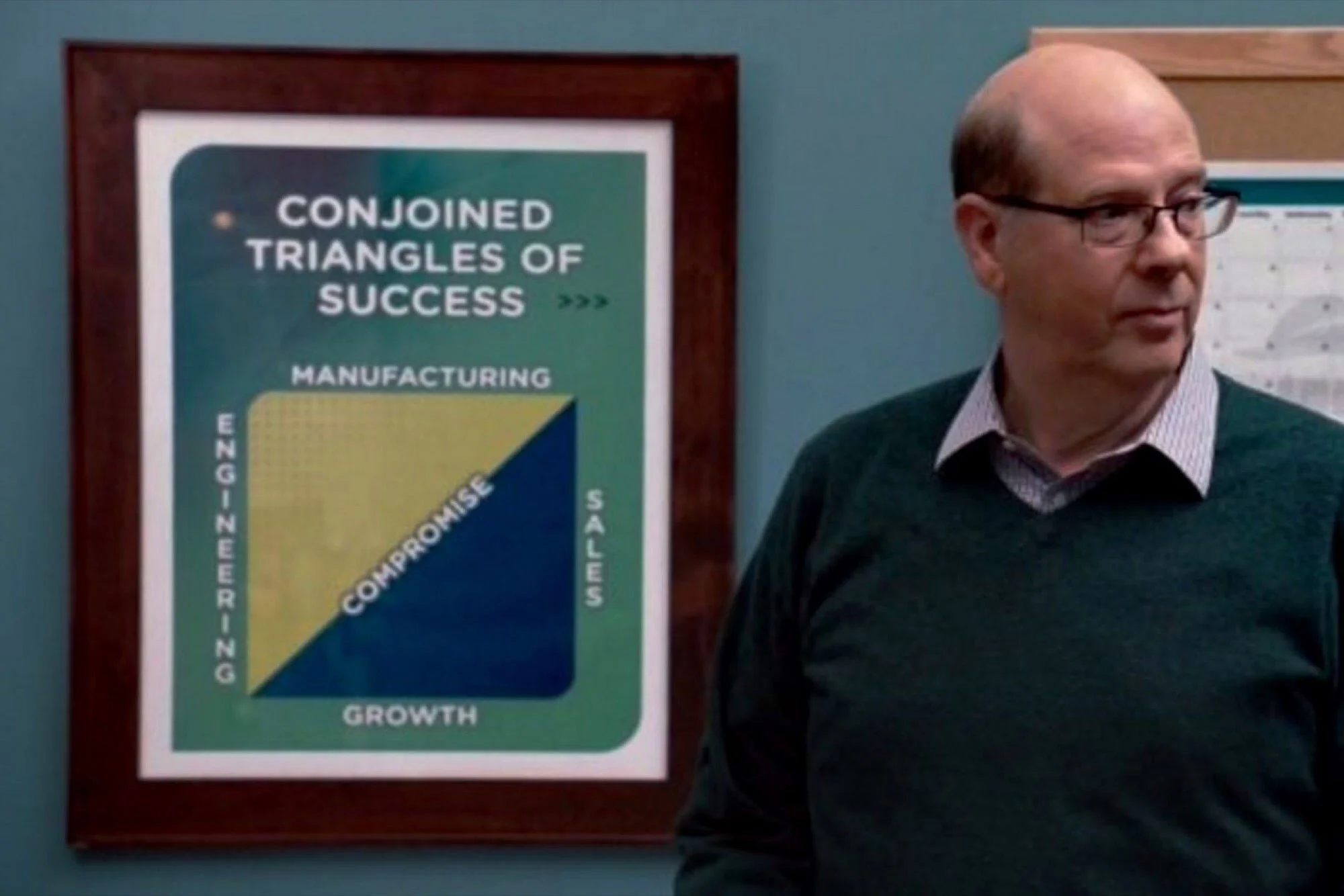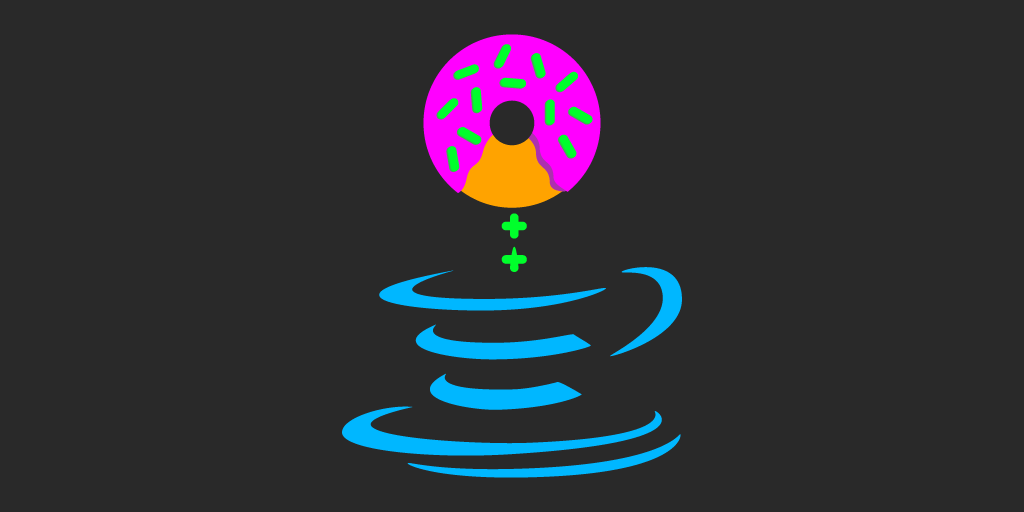3 Founding Principles of Big Tech
The ‘Silicon Valley’ TV show was a brilliant HBO satire about companies and culture in The Valley. The third season of the show portrays a Steve Ballmer-like CEO who incessantly touts his oversimplified business diagram, which he calls the “Conjoined Triangles of Success“.
Just as the CEO’s character is based on real-life people (Steve Ballmer amongst others), the Conjoined Triangles of Success “were inspired by the many visual aids that businesses use to better communicate their methodologies. [The show’s writers,] Judge and Berg directly compare the Conjoined Triangles to the well-known Pyramid of Success. [see Bustle]”
I couldn’t help but create my own pyramid of success, which I have deemed The Conjoined Trapezoids of Success. ;-) It portrays the fundamental principles of Google, PayPal, Apple, and Tesla condensed into one, easy-to-remember diagram. While the diagram might be as oversimplified as The Conjoined Triangles of Success, it keeps me focused on the important values that were the pillars of widely successful companies.
Recruiting
Recruiting is the foundation and most important aspect of the pyramid. I borrowed this concept from Google and PayPal. A member of the PayPal Mafia, Reid Hoffman attributes the success of PayPal to recruiting ambitious, talented people. In this This Week in Startups interview (min 57:25), Reid stated:
What made PayPal so successful was Peter [Thiel] and Max [Levchin] were able to hire extremely talented folks with little experience but who were ambitious, as opposed to the classic wisdom of hiring people with 10–20 years of experience.
PayPal got high quality people who were able to learn intensely and fast.
This is a valuable thing to stack massively in a company.
Peter and Max did this style of hiring for 98% of PayPal.
The other attributes were that it was an intense short run where eBay bought it, and there were a lot of young people who started to get some assets but were still very hungry.
Eric Schmidt, the former Google CEO, also attributes recruiting to the success of Google. Eric Schmidt and the co-authors of How Google Works devoted a whole section of their book to the topic of “Talent—Hiring Is the Most Important Thing You Do“. The book’s manuscript states:
In dynamic industries, conditions change frequently, so experience and ability to perform a particular role is not as important as the factors that define a smart creative: technical knowledge, business expertise, and creativity. When considering candidates for a role, favor the ones with a track record of learning new things over the ones with a track record in that particular role. The learners will successfully adapt to new roles, but role specialists will not.
Don’t confuse smart with knowledgeable. Smart refers to cognitive ability and aptitude whereas knowledgeable refers to education and experience. Knowledge doesn’t get you very far if you don’t have the smarts to apply it to the ever-changing tech world.
You can probably consider creativity to be just a part of being smart; however, creativity needs to be called out separately as it has two meanings: 1) creativity from a technical solution perspective and 2) creativity from a user interface perspective. The latter is a large part of the next tier in the pyramid, Product.
Products
Eric Schmidt and his co-authors emphasize the importance of superior products in their How Google Works manuscript. The authors state, “The primary objective of product teams is to create new, surprising, radically better products. Do this, and any smart company will figure out how to make money from it. Products that are highly valuable and differentiated on a scalable basis will generate great revenue.“
It’s been written about many times, so I’ll only briefly mention it here. Apple’s eye-catching, wow-factor designs have lead to wildly successful products. Ken Segal devoted a whole book to Apple’s simple and elegant philosophy. The book states, “Simplicity isn’t just a design principle at Apple—it’s a value that permeates every level of the organization. It’s what helped Apple recover from near death in 1997 to become the most valuable company on earth in 2012.“ - Insanely Simple by Ken Segal
Culture
If Big Tech were a "Fight Club", the rules would go something like this - The first rule of success is: You recognize the importance of Recruiting. The second rule of success is: You recognize the importance of Products. Third rule of success: "Culture eats strategy for breakfast." (Peter Drucker) At Google and Tesla, the corporate culture emphasizes autonomy, thinking BIG, and moving fast.
The How Google Works Summary states:
Think 10X, not 10%. Global scale is available to just about everyone. But too many people are stuck in the old, limited mindset. Thinking big gives people much more freedom, since it pushes them to remove constraints and spurs ideas that were previously not considered. And it is a powerful tactic to attract and retain the very best people, who are usually drawn to the biggest challenges.
In a section of the book entitled, “Think big, act small,“ Eric Schmidt and his co-authors go on to say, “We have long felt that the start-up model, with small, autonomous teams located in one office led by passionate founders, is the most effective way to achieve remarkable new things.“ And it’s not just about autonomous teams. The book also frequently mentions empowering employees too.
Last but not least is Move Fast. I struggled whether to name this last one “Getting-things-done” or “Just-enough Process” both of which play into moving fast. Tesla sums it up best with their Move Fast principle, which states, “The ability to rapidly respond to trends and changes in the market drives competitive advantage. This helps building resilience through speedy response to current issues and challenges…”
While Facebook’s infamous motto of “move fast and break things” gave the Move Fast principle a bad name, there is still a lot of merit to the credo. The following How Google Works references give credit to the Move Fast credo:
…Fast-moving employees can create massive value in short periods of time.
…most competitive advantages are fleeting, so you have to have a “grow big, fast” strategy.
Optimize for speed. Product cycles need to be quick: ship new products and features as quickly as possible, then gather market data to rapidly iterate and improve [tenents of the “Build, Measure, Learn” Iterative Feedback Loop and the Minimum Viable Product (MVP)]. When you optimize for speed things will go wrong, so tolerate some messiness and empower smart creatives to adjust for problems. When you fail, do it quickly and without stigma and salvage the technology and expertise gained in the effort.










